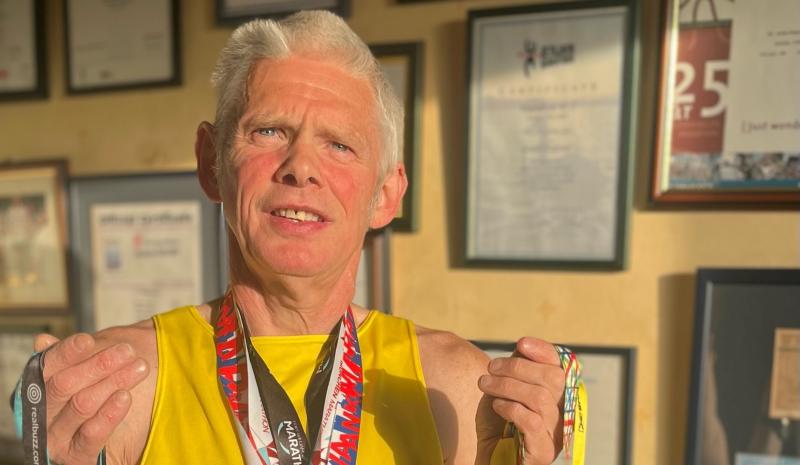News
Garda fleet is down by one fifth in the past five years

The number of Garda vehicles in County Galway has fallen by one fifth over the past five years.
There are currently 81 vehicles – the majority of them cars – available to members of the force in Galway; that’s a drop of 22 on the 2010 total of 103.
The figures have been revealed to Galway West Independent TD Noel Grealish in response to a Parliamentary Question he tabled to Minister for Justice and Equality, Frances Fitzgerald.
“What they clearly show is that Gardaí in Galway City and County are being seriously hampered in their efforts to protect the communities they serve. A 21% reduction in the fleet in the space of five years has to have a substantial knock-on effect in terms of the ability of the force to do their job,” said Deputy Grealish.
He added that an indication of the age of the vehicles which Galway Gardaí used was given by the fact that a total of 17 had been scrapped during 2015, 15 of them cars.
The Minister’s figures revealed that the number of Galway Garda vehicles had fallen particularly sharply in the two years following 2010, the total going from 103 to 95 in 2011 and 78 in 2012, with the number increasing by just three since then.
There are now 59 Garda cars in the city and county, a reduction of 30% on the 2010 total of 77, along with 13 vans (up from 10 five years ago), 6 motorcycles (compared with 11 in 2010), two 4x4s (same) and one other vehicle (a drop of two).
The number of Garda cars had actually dropped in 2013 to just 50, a fall of more than one-third on three years previously, their numbers being supplemented since by the addition of eight cars in the interim.
In her reply to Deputy Grealish’s Parliamentary Question, Minister Fitzgerald said that the Government was committed to ensuring that An Garda Síochána had the resources to deliver highly-mobile and responsive Garda patrols in both rural and urban communities.
“Since 2012, almost €34 million has been invested in renewing the Garda fleet to support front line Garda responses. Over 640 new vehicles are coming on stream since the start of 2015 including new specialised vehicles.
“This investment will provide the Gardaí with additional high powered vehicles, marked and unmarked patrol cars, cars for surveillance and covert operations, motor cycles for high visibility road policing and vehicles for public order policing,” she said.
The Minister added that the Government’s Capital Plan 2016-2021 provided an additional €46 million for new Garda vehicles, which would be allocated on a regional basis as determined by the Garda Commissioner.
Deputy Grealish said he would continue to press for the allocation of proper resources for Gardaí in Galway.
“There is increasing concern among rural communities about gangs roving the countryside and carrying out robberies, quickly leaving the scene in what are often high-powered stolen cars.
“With the closure of small rural Garda stations, there is an increasing need for Gardaí to have at their disposal the kind of vehicles they need to provide a rapid response to such incidents.
“The fact that 17 vehicles in the Galway fleet were scrapped during 2015 shows that we clearly have not had the kind of vehicles that are fit for purpose, even apart from the fact that their total numbers are so reduced compared with five years ago,” added Deputy Grealish.
Connacht Tribune
West has lower cancer survival rates than rest

Significant state investment is required to address ‘shocking’ inequalities that leave cancer patients in the West at greater risk of succumbing to the disease.
A meeting of Regional Health Forum West heard that survival rates for breast, lung and colorectal cancers than the national average, and with the most deprived quintile of the population, the West’s residents faced poorer outcomes from a cancer diagnosis.
For breast cancer patients, the five-year survival rate was 80% in the West versus 85% nationally; for lung cancer patients it was 16.7% in the west against a 19.5% national survival rate; and in the West’s colorectal cancer patients, there was a 62.6% survival rate where the national average was 63.1%.
These startling statistics were provided in answer to a question from Ballinasloe-based Cllr Evelyn Parsons (Ind) who said it was yet another reminder that cancer treatment infrastructure in the West was in dire need of improvement.
“The situation is pretty stark. In the Western Regional Health Forum area, we have the highest incidence of deprivation and the highest health inequalities because of that – we have the highest incidences of cancer nationally because of that,” said Cllr Parsons, who is also a general practitioner.
In details provided by CEO of Saolta Health Care Group, which operates Galway’s hospitals, it was stated that a number of factors were impacting on patient outcomes.
Get the full story in this week’s Connacht Tribune, on sale in shops now, or you can download the digital edition from www.connachttribune.ie. You can also download our Connacht Tribune App from Apple’s App Store or get the Android Version from Google Play.
Connacht Tribune
Marathon Man plans to call a halt – but not before he hits 160 races

On the eve of completing his 150th marathon, an odyssey that has taken him across 53 countries, Loughrea’s Marathon Man has announced that he is planning to hang up his running shoes.
But not before Jarlath Fitzgerald completes another ten races, making it 160 marathons on the occasion of his 60th birthday.
“I want to draw the line in 2026. I turn 57 in October and when I reach 60 it’s the finishing line. The longer races are taking it out of me. I did 20 miles there two weeks ago and didn’t feel good. It’s getting harder,” he reveals.
“I’ve arthritis in both hips and there’s wear and tear in the knees.”
We speak as he is about to head out for a run before his shift in Supervalu Loughrea. Despite his physical complaints, he still clocks up 30 miles every second week and generally runs four days a week.
Jarlath receives injections to his left hip to keep the pain at bay while running on the road.
To give his joints a break, during the winter he runs cross country and often does a five-mile trek around Kylebrack Wood.
He is planning on running his 150th marathon in Cork on June 4, where a group of 20 made up of work colleagues, friends and running mates from Loughrea Athletics Club will join him.
Some are doing the 10k, others are doing the half marathon, but all will be there on the finishing line to cheer him on in the phenomenal achievement.
Get the full story in this week’s Connacht Tribune, on sale in shops now, or you can download the digital edition from www.connachttribune.ie. You can also download our Connacht Tribune App from Apple’s App Store or get the Android Version from Google Play.
CITY TRIBUNE
Galway ‘masterplan’ needed to tackle housing and transport crises

From the Galway City Tribune – An impassioned plea for a ‘masterplan’ that would guide Galway City into the future has been made in the Dáil. Galway West TD Catherine Connolly stated this week that there needed to be an all-inclusive approach with “vision and leadership” in order to build a sustainable city.
Deputy Connolly spoke at length at the crisis surrounding traffic and housing in Galway city and said that not all of the blame could be laid at the door of the local authority.
She said that her preference would be the provision of light rail as the main form of public transport, but that this would have to be driven by the government.
“I sat on the local council for 17 years and despaired at all of the solutions going down one road, metaphorically and literally. In 2005 we put Park & Ride into the development plan, but that has not been rolled out. A 2016 transport strategy was outdated at the time and still has not been updated.
“Due to the housing crisis in the city, a task force was set up in 2019. Not a single report or analysis has been published on the cause of the crisis,” added Deputy Connolly.
She then referred to a report from the Land Development Agency (LDA) that identified lands suitable for the provision of housing. But she said that two-thirds of these had significant problems and a large portion was in Merlin Park University Hospital which, she said, would never have housing built on it.
In response, Minister Simon Harris spoke of the continuing job investment in the city and also in higher education, which is his portfolio.
But turning his attention to traffic congestion, he accepted that there were “real issues” when it came to transport, mobility and accessibility around Galway.
“We share the view that we need a Park & Ride facility and I understand there are also Bus Connects plans.
“I also suggest that the City Council reflect on her comments. I am proud to be in a Government that is providing unparalleled levels of investment to local authorities and unparalleled opportunities for local authorities to draw down,” he said.
Then Minister Harris referred to the controversial Galway City Outer Ring Road which he said was “struck down by An Bord Pleanála”, despite a lot of energy having been put into that project.
However, Deputy Connolly picked up on this and pointed out that An Bord Pleanála did not say ‘No’ to the ring road.
“The High Court said ‘No’ to the ring road because An Bord Pleanála acknowledged it failed utterly to consider climate change and our climate change obligations.
“That tells us something about An Bord Pleanála and the management that submitted such a plan.”
In the end, Minister Harris agreed that there needed to be a masterplan for Galway City.
“I suggest it is for the local authority to come up with a vision and then work with the Government to try to fund and implement that.”















